Building the Pyramids
Egyptian pyramid construction techniques are the controversial subject of many hypotheses. These techniques seem to have developed over time, later pyramids were not constructed in the same way as earlier ones. Most of the construction hypotheses are based on the belief that huge stones were carved from quarries with copper chisels, and these blocks were then dragged and lifted into position. Disagreements chiefly concern the methods used to move and place the stones. The three main pyramids at Giza, together with subsidiary pyramids and the remains of other ancient structures
In addition to the many unresolved arguments about the construction techniques, there have been disagreements as to the kind of workforce used. The Greeks, many years after the event, believed that the pyramids must have been built by slave labor. Archaeologists now believe that the Great Pyramid of Giza was built by tens of thousands of skilled workers who camped near the pyramids and worked for a salary or as a form of tax payment until the construction was completed, pointing to workers’ cemeteries. Pseudoscientific theories have proliferated in the vacuum of official construction explanations. During the earliest period, pyramids were constructed wholly of stone. Locally quarried limestone was the material of choice for the main body of these pyramids, while a higher quality of limestone quarried at Tura was used for the outer casing. Granite, quarried near Aswan, was used to construct some architectural elements, including the portcullis and the roofs and walls of the burial chamber. Occasionally, granite was used in the outer casing as well, such as in the Pyramid of Menkaure. In the early pyramids, the layers of stone forming the pyramid body were laid sloping inwards; however, this configuration was found to be less stable than simply stacking the stones horizontally on top of each other. The Bent Pyramid at Dahshur seems to indicate acceptance of a new technique at a transition between these two building techniques. Its lower section is built of sloping courses while in its upper section the stones are laid horizontally.
During the Middle Kingdom, pyramid construction techniques changed again. Most pyramids built then were little more than mountains of mud-brick encased in a veneer of polished limestone. In several cases, later pyramids were built on top of natural hills to further reduce the volume of material needed in their construction. The materials and methods of construction used in the earliest pyramids have ensured their survival in a generally much better state of preservation than for the pyramid monuments of the later pharaohs.
Hypothesis on the construction method of pyramids
One of the major problems faced by the early pyramid builders was the need to move huge quantities of stone. The Twelfth Dynasty tomb of Djehutihotep has an illustration of 172 men pulling an alabaster statue of him on a sledge. The statue is estimated to weigh 60 tons and it is estimated that 45 workers would be required to start moving a 16,300 kg lubricated block, or eight workers to move a 2,750 kg block.
As the stones forming the core of the pyramids were roughly cut, especially in the Great Pyramid, the material used to fill the gaps was another problem. Huge quantities of gypsum and rubble were needed. The filling has almost no binding properties, but it was necessary to stabilize the construction. To make the gypsum mortar, it had to be dehydrated by heating which requires large quantities of wood.
There is good information concerning the location of the quarries, some of the tools used to cut stone in the quarries, transportation of the stone to the monument, leveling the foundation, and leveling the subsequent tiers of the developing superstructure. Workmen probably used copper chisels, drills, and saws to cut softer stone, such as most of the limestone. The harder stones, such as granite, granodiorite, syenite, and basalt, cannot be cut with copper tools alone, instead, they were worked with time-consuming methods like pounding with dolerite, drilling, and sawing with the aid of an abrasive, such as quartz sand. Blocks were transported by sledge likely lubricated by water. Leveling the foundation may have been accomplished by the use of water-filled trenches or through the use of a crude square level and experienced surveyors.
The unknowns of pyramid construction chiefly center on the question of how the blocks were moved up the superstructure. There is no known accurate historical or archaeological evidence that definitively resolves the question. Therefore, most discussion on construction methods involves functional possibilities that are supported by limited historical and archaeological evidence.
Historical accounts for the construction of the Egyptian pyramids do little to point definitively to methods to lift the blocks, yet most Egyptologists refer to these accounts when discussing this portion of pyramid construction.
This pyramid was made like stairs. When this, its first form, was completed, the workmen used short wooden logs as levers to raise the rest of the stones, they heaved up the blocks from the ground onto the first tier of steps, when the stone had been raised, it was set on another lever that stood on the first tier, and the lever again used to lift it from this tier to the next. It may be that there was a new lever on each tier of steps, or perhaps there was only one lever, quite portable, which they carried up to each tier in turn, this is uncertain, as both possibilities were mentioned. But is certain, that the upper part of the pyramid was finished off first, then the next below it, and last of all the base and the lowest part.
Average core blocks of the Great Pyramid weigh about 1.5 tons each, and the granite blocks used to roof the burial chambers are estimated to weigh up to 80 tons each. The entire Giza Plateau is believed to have been constructed over the reign of five pharaohs in less than a hundred years, which generally includes: The Great Pyramid, Khafre and Menkaure’s pyramids, the Great Sphinx, the Sphinx, and Valley Temples, 35 boat pits cut out of solid bedrock, and several causeways, as well as paving nearly the entire plateau with large stones.


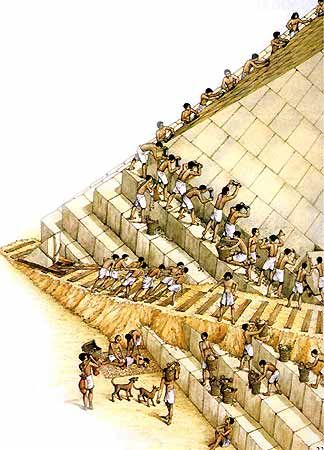
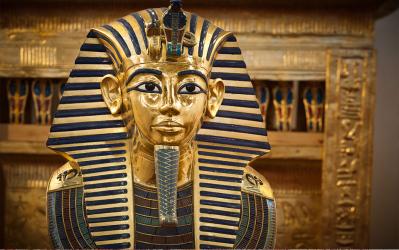
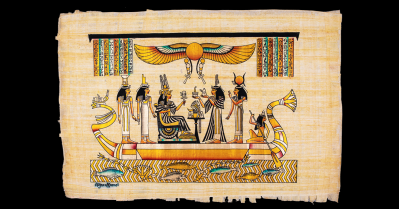





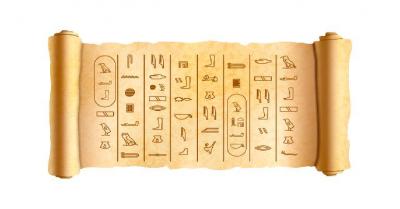


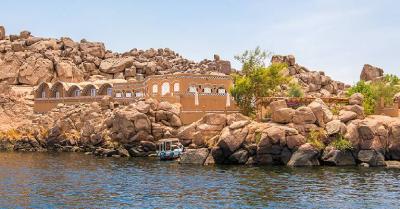
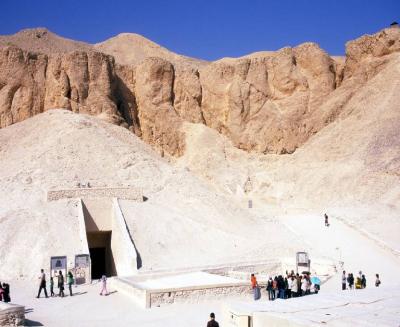


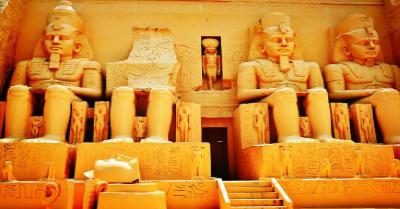
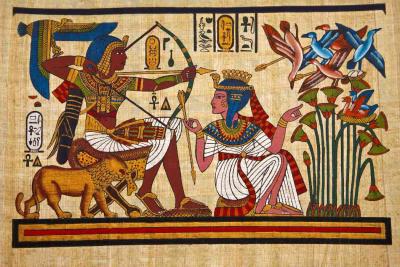


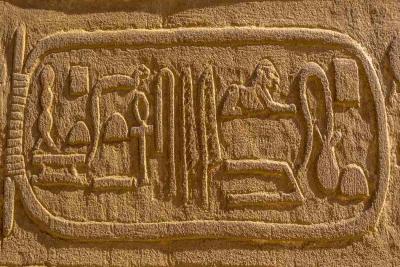







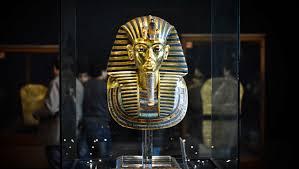

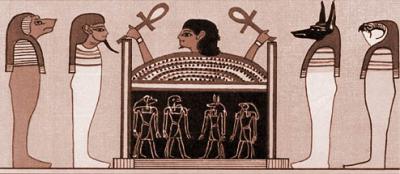
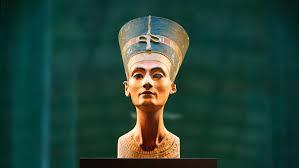


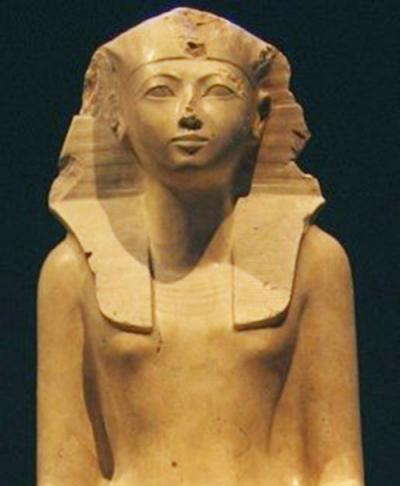



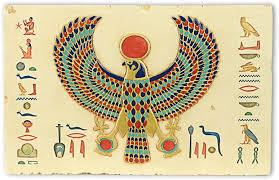

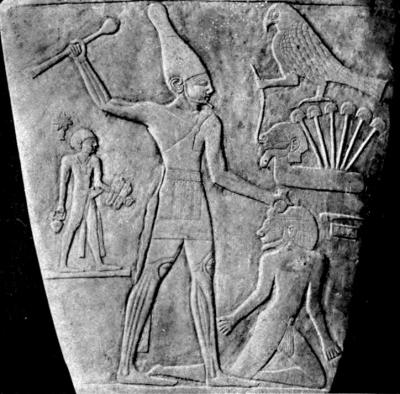








Comments
The elevation of the giza plateau was higher than were the base of the pyramyd sits today that can only mean that they excavated there way to the pyramid base elevation as it sits today the DDC Pyramid construction method can show you how that could do